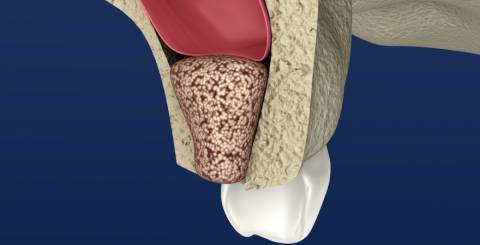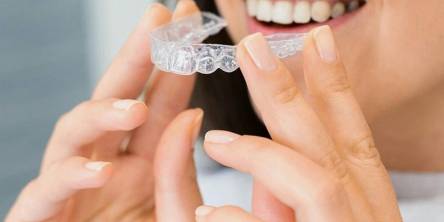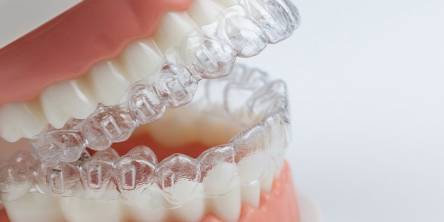What to Know About Sinus Lift

When you want dental implants but don't have enough jaw bone to secure the implant, your dentist may recommend sinus lift surgery.
This procedure is also known as sinus augmentation or sinus graft. This procedure can be performed by a variety of medical specialists, including periodontists and oral surgeons.
A dental specialist can perform sinus lift surgery using a variety of techniques. Continue reading to learn more about these methods and how they can help secure your dental implants.
Purpose of Sinus Lift
The augmentation or lifting up of the maxillary sinus to make more room for new bone is referred to as a sinus lift.
The maxillary sinuses are air-filled cavities located just above the back of the maxilla, or upper jaw. There is more bone for a dentist to place a dental implant by lifting the sinus and grafting bone in between.
If you don't have enough upper jaw bone, the implant won't be able to properly anchor, and your new dental implant won't be able to perform more demanding tasks like chewing.
Without sufficient bone, the dental implant will not be properly secured and may fail. Birth defects, cancer, natural variation, where your sinus cavities are very large or your jawbone is very thin, and periodontal disease is all possible causes of jaw bone loss.
During the Procedure
The following are some of the fundamental steps:
- To keep you comfortable during the procedure, you may be given oral or intravenous sedatives, or a dentist may numb the area with a local anesthetic.
- In order to expose the bone, your surgeon will identify and make incisions into the back portion of your gum tissue.
- Your surgeon will carefully cut a small area of bone while avoiding the sinus membranes.
- Your surgeon will raise the membrane by lifting the cut portion of bone into the sinus cavity.
- In the newly lifted area, your surgeon will place bone graft materials. This can be bone from another part of your body or artificial bone material. Before the procedure, you and your doctor will have discussed the best option for you.
- Sutures will be used by your surgeon to close the incisions in your gums.
Recovery
Swelling and bleeding are two of the most common side effects of a sinus lift. This discomfort usually lasts only a few days, and you can resume your normal activities as directed by your doctor.
The perforation of the Schneiderian membrane is the most common complication of sinus lift surgery. Perforation of this membrane, which lines the maxillary sinus cavity, increases the risk of chronic sinusitis and sinus infection.
Typically, you will return to your doctor within a week of the procedure. If your pain worsens rather than improves, or if your bleeding is difficult to control, contact your doctor as soon as possible.
Cost
The procedure may cost between $1,500 and $5,000. Prior to the procedure, your doctor should go over the expected costs with you.
If you have dental insurance, it may cover a portion of the procedure. To pay for the procedure, some people choose financing options such as payment plans with their dentist or financing through a medical financing company.
What to Expect
Before placing dental implants, your jawbone may need to heal and develop for 4 to 12 months. However, if you have sinus lift surgery, your doctor may decide to place dental implants right away.
After a successful sinus lift surgery, you usually do not need the procedure again. If your doctor perforates the Schneiderian membrane during the procedure, he or she may advise you to wait for the membrane to heal before repeating the sinus lift.
The Bottom Line
Sinus lift surgery can pave the way for the placement of dental implants. The outpatient procedure aids in the formation of a stronger bone anchor for a dental implant, increasing the likelihood that the implant or implants will be successful.
Before the implant procedure, your doctor should carefully evaluate your jawbone health and explain their sinus lift recommendations, approaches, and potential bone grafting materials.
Similar Articles
In the past, correcting misaligned teeth meant committing to years of highly visible metal braces, diet restrictions, and frequent, sometimes uncomfortable, adjustments
Baby teeth can cause a lot of worry for parents, especially when things do not seem to happen on
Ever caught yourself hiding behind your hand during a good laugh? Or dodging the camera at family gatherings? Those small chips, stubborn stains, or awkward gaps in your teeth can chip away at your confidence year after year.
When most people think about straightening their teeth, they envision traditional metal braces. However, because of recent advances in orthodontics, there are now more discreet, pleasant, and efficient solutions available.
Healthy gums not only ensure a beautiful smile but are also essential for overall oral health. However, conditions often arise that require surgical intervention in addition to dental treatment.
A tight booking calendar, a last-minute casting call, and a grin that has to look flawless by Friday—life as a Harlem creative rarely leaves space for dental upgrades
Gingivitis is an inflammation of the gums caused by the accumulation of plaque and bacteria.
Curious about Invisalign but unsure if it's the appropriate treatment option for you? You are in the right place. We are the experts in clear aligner orthodontic systems
A missing tooth is not only an aesthetic problem but can also affect overall oral health.









